Downy Mildew of Grapes
Return to Diseases
Downy mildew (Plasmopara viticola) is caused by a water mold and is most severe in wet areas or during rainy seasons. All green plant parts, especially leaves, are susceptible. Leaf infections begin as yellow, mottled spots on upper surfaces; spots become reddish-brown along veins; downy growth develops on undersides of leaves. Leaf spots turn necrotic (dead), and severely infected leaves drop. Premature defoliation may decrease winter hardiness. Infected shoot tips, petioles, and tendrils become distorted and downy sporulation develops. Infection of cluster stems (rachises) can lead to loss of entire clusters. Fruit may become infected up to 3 to 4 weeks after bloom; infected fruit turn purple and shrivel. This cyclic disease depends upon rain and leaf wetness. Fruiting structures (sporangia) that contain swimming spores (zoospores) are produced when free water is available (greater than 95% humidity); zoospores are disseminated by rain splash and wind-driven rain. Overwintering occurs in leaf debris on the vineyard floor.
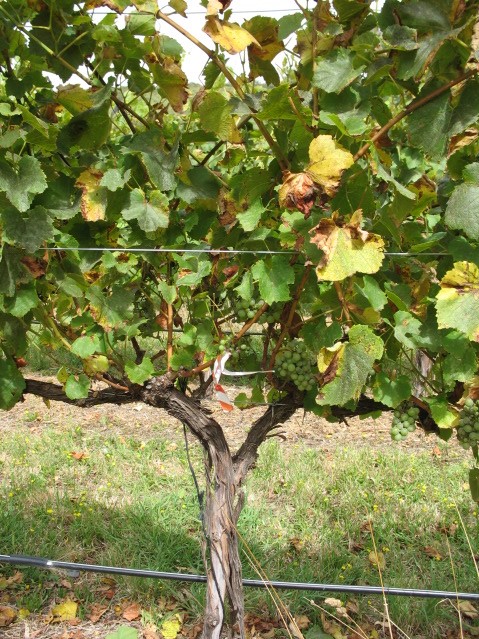
Downy mildew causing leaf symptoms and leaf drop.
(Photo: Julie Beale, University of Kentucky)
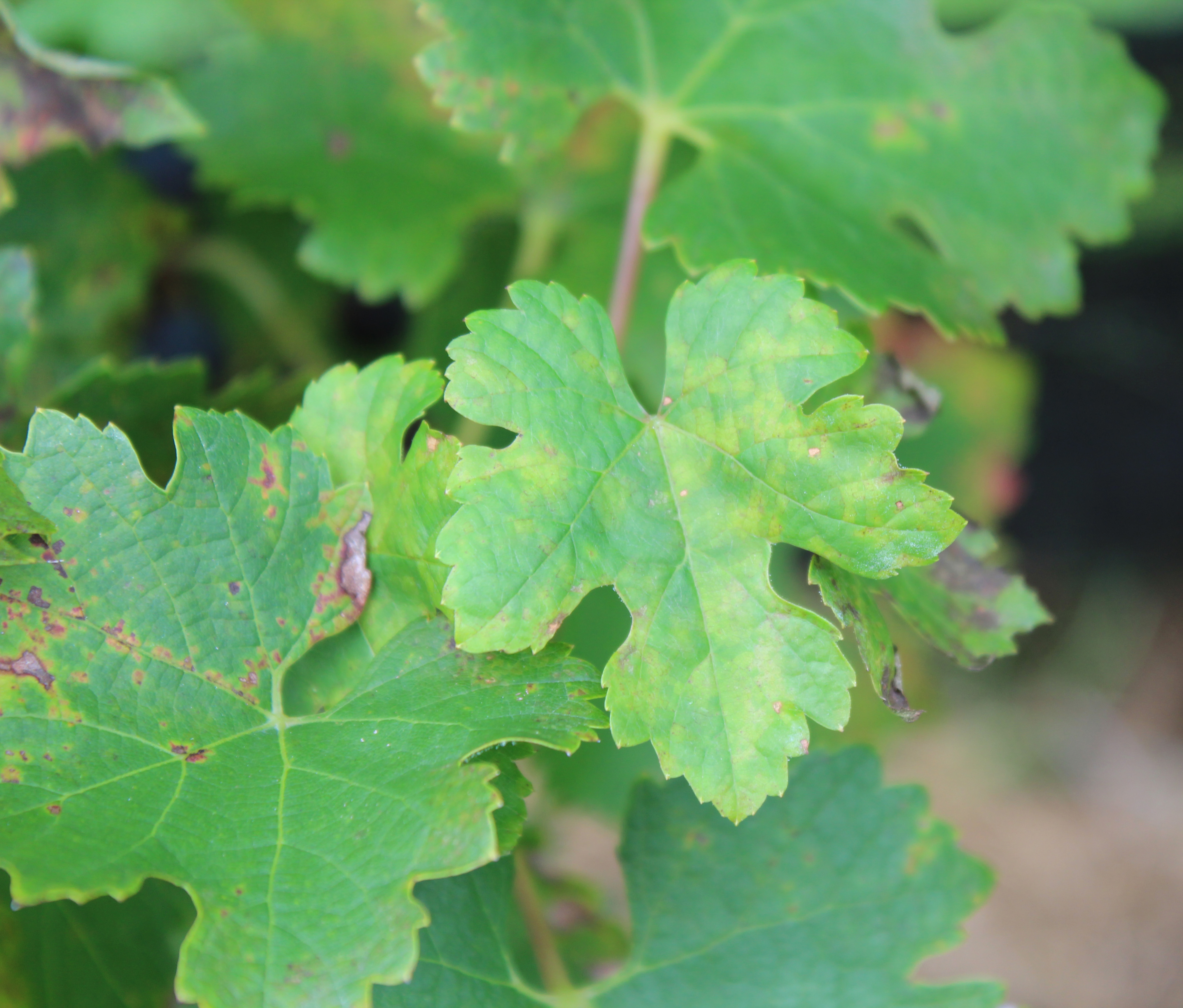
Downy mildew early symptoms on upper leaf surface.
(Photo: Julie Beale, University of Kentucky)
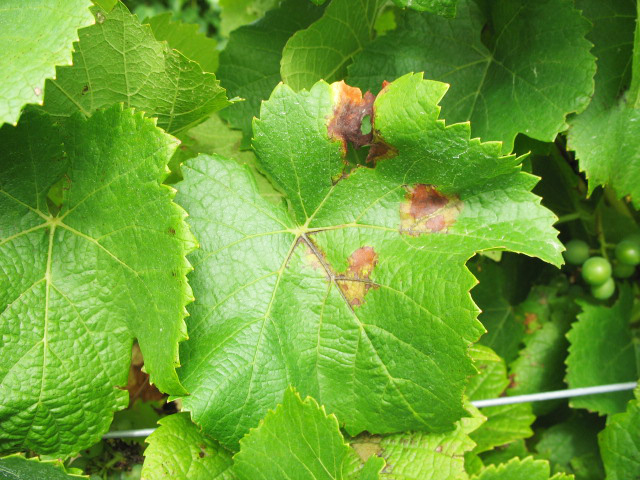
Downy mildew necrotic leaf spots.
(Photo: Julie Beale, University of Kentucky)
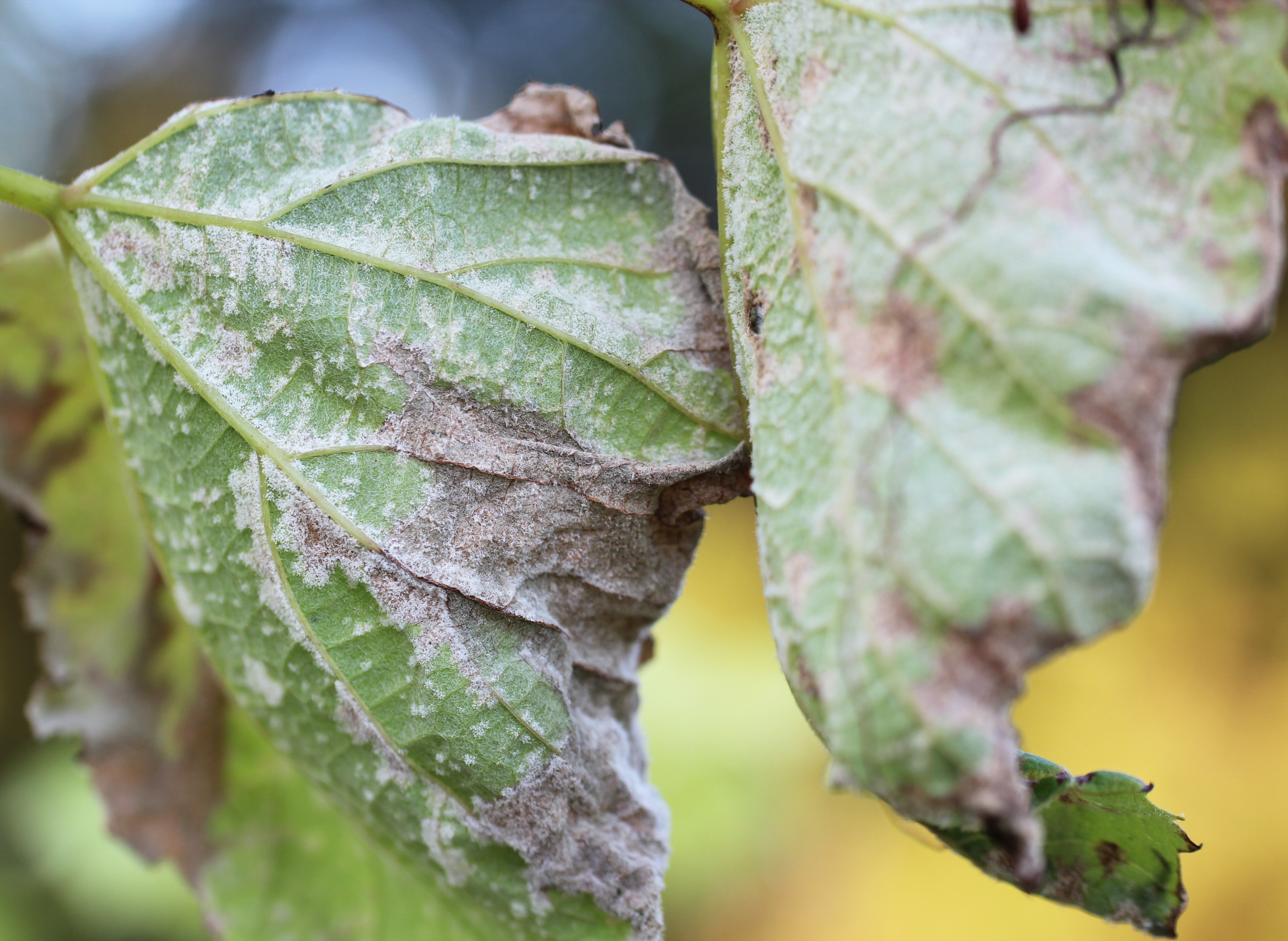
Downy mildew growth on under surface of leaves.
(Photo: Nicole Gauthier, University of Kentucky)
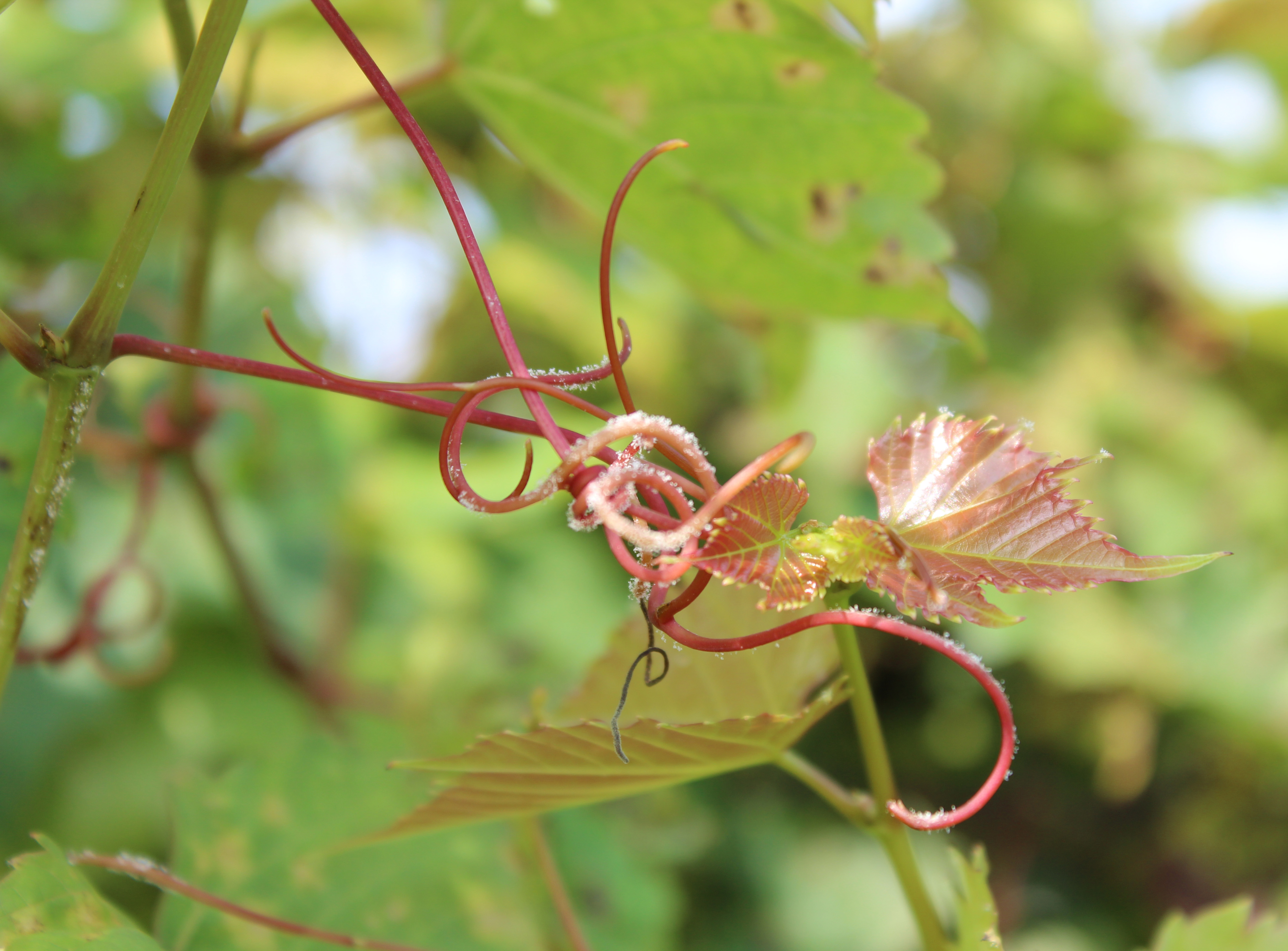
Downy mildew growth on tendrils.
(Photo: Nicole Gauthier, University of Kentucky)
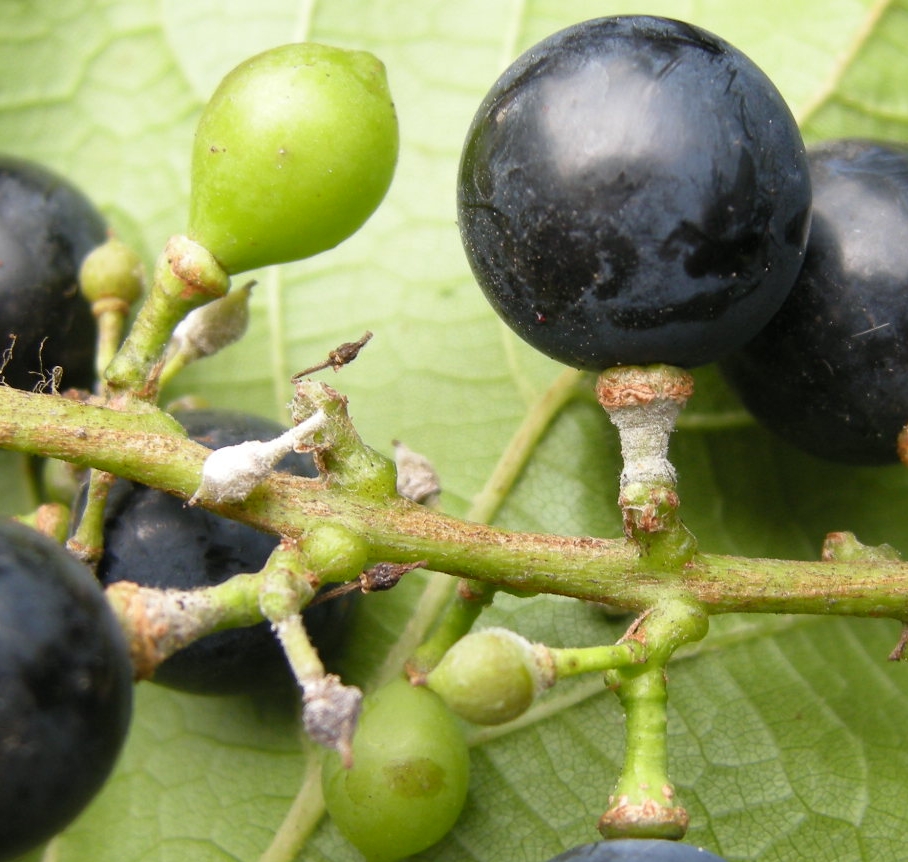
Downy mildew growth on rachises and pedicels.
(Photo: Chris Smigell, University of Kentucky)
Management:
- Practice proper sanitation (remove infected tissue).
- Increase air circulation to encourage drying of plant tissues (pruning, thinning, spacing, managing weeds).
- Apply fungicides (beginning at budbreak).
- Post-harvest fungicide applications can reduce infection and leaf drop that decreases winter hardiness.
- Consider planting tolerant cultivars.
